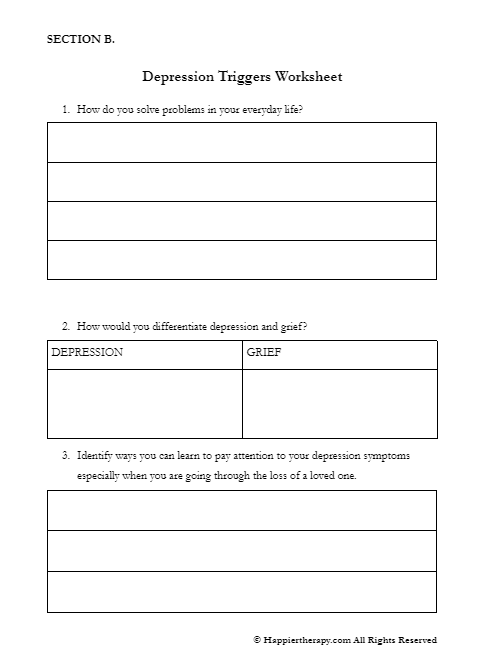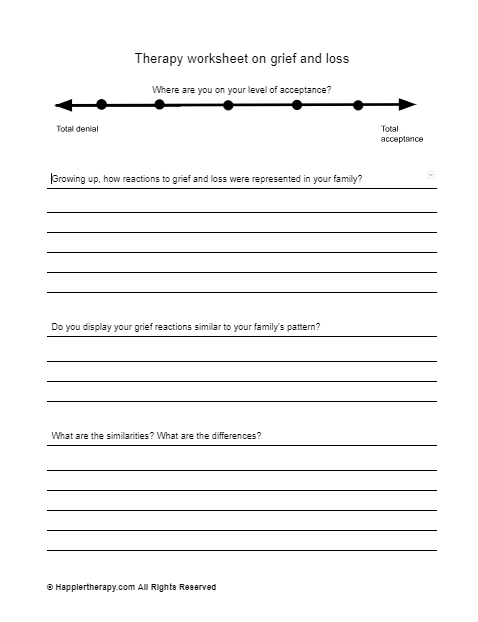Therapy Grief Worksheet
Download Worksheet
What is the theory behind this Therapy Grief Worksheet?
Grief therapy or counselling helps individuals who are struggling with moving on after experiencing the loss of a loved one in their life. Grief is an inevitable part of life for all, but for some the resulting emotions become too overwhelming to bear, withdrawing them from seeking social support.. Using worksheets in grief therapy can help such individuals express their emotions and feelings and determine where they stand in the grief process.
How will the worksheet help?
This worksheet will guide clients about the five stages of grief as proposed by Kubler-Ross and Kessler. It is important for them to understand that grieving is a normal process that runs its due course and there is no harm in seeking help to get through it. It will also help them reflect on where they currently stand in the grieving process.
How to use the worksheet?
This information worksheet can be handed to clients in the initial stages of grief therapy sessions to familiarise them with what they are going through and where they currently stand. Ask your clients to go through the content of the infosheet and get back to you with questions.

 By
By


